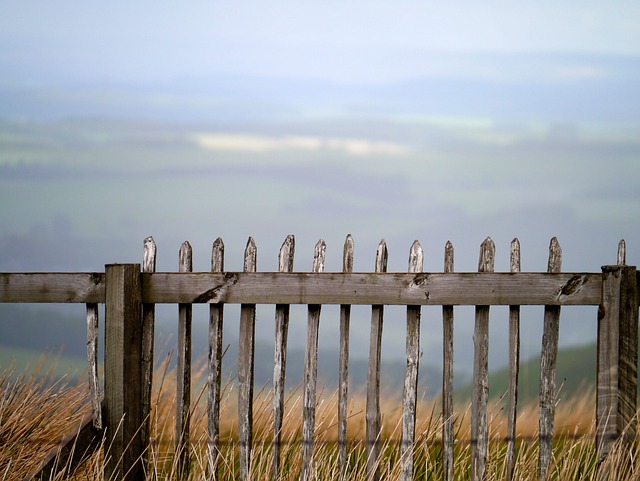For New Bedford, Massachusetts homeowners looking to enhance their outdoor spaces, installing a new fence offers both privacy and property value. This guide provides a comprehensive DIY approach to fence installation, covering essential aspects from selecting the perfect option for your yard to ensuring long-lasting security. By understanding measurement techniques, gathering the right tools and materials, and following step-by-step instructions, you can achieve a sturdy and aesthetically pleasing fence tailored to your unique New Bedford landscape.
- Understanding Your Fence Options for New Bedford Yards
- Measuring and Planning Your Fence Layout Effectively
- Tools and Materials Required for a Successful Installation
- Step-by-Step Guide to DIY Fence Assembly
- Tips for Ensuring Longevity and Security of Your New Fence
Understanding Your Fence Options for New Bedford Yards
When it comes to fencing your New Bedford, Massachusetts yard, there’s a wide array of options available to homeowners. The key to making the right choice lies in understanding your specific needs and preferences. Start by evaluating factors like privacy, aesthetic appeal, durability, and budget. Fences can range from simple wood picket designs to sturdy vinyl or chain-link varieties, each offering unique benefits.
Consider the layout of your yard; is it a large open space or more defined with odd angles? The shape and size will influence the type of fence that suits best. Additionally, think about the level of privacy you desire. Some fences, like solid wood or vinyl, provide complete seclusion, while others, such as lattice or wrought iron, offer a more transparent barrier.
Measuring and Planning Your Fence Layout Effectively
When planning a DIY fence installation, effective measuring and layout planning are crucial steps that often get overlooked. Before breaking ground, take the time to assess your New Bedford, Massachusetts property carefully. Consider both the visual aspects and practical elements. Plotting out the exact location of your desired fence will ensure it blends seamlessly with your landscape while also adhering to local regulations regarding set-backs and property lines.
Start by identifying the perimeter of your property, marking any existing structures or trees that could affect the fence’s placement. Use measuring tools like a tape measure or laser distance meter to determine the lengths required for each section of your fence. Create a detailed plan using graph paper or digital design software, indicating where posts will be placed and how each panel will fit together. This meticulous approach will make installation smoother, reduce errors, and ensure your final product is both functional and aesthetically pleasing.
Tools and Materials Required for a Successful Installation
For a successful DIY fence installation, New Bedford homeowners should gather the right tools and materials before beginning. This includes a measuring tape, chalk lines, post-hole digger or power drill with an attachment, a level, string line, and the appropriate fencing material such as posts, rails, and pickets. Don’t forget safety gear like work gloves and eye protection. Having these essentials on hand ensures a more efficient and accurate installation process.
When selecting materials, consider factors like fence style, height, and intended use. For example, wooden fences require specific types of posts and fasteners, while vinyl or metal fences have their own set of requirements. Ensure all components are compatible to avoid structural issues later on.
Step-by-Step Guide to DIY Fence Assembly
To tackle a DIY fence installation, follow this step-by-step guide. Begin by measuring and marking the perimeter of your desired fence line with spray paint. Next, clear the area of any debris or obstructions. Dig holes for the fence posts using a post-hole digger, ensuring each hole is deep enough to support the height of your fence. Place the wooden posts in the holes and fill them partially with concrete to secure them in place. Allow the concrete to set completely according to manufacturer instructions. Once the concrete is cured, attach the fence panels to the posts using brackets or nails, securing them tightly. Check that all connections are sturdy and level before filling the remaining space around the posts with more concrete for added reinforcement.
Tips for Ensuring Longevity and Security of Your New Fence
To ensure your new fence installation in New Bedford, Massachusetts stands the test of time and offers robust security, consider these tips. Regular cleaning and maintenance are essential to prevent damage from weather conditions and pests. Inspect your fence periodically for any signs of wear and tear, loosened posts, or broken boards, addressing issues promptly before they escalate. Applying a fresh coat of protective coating or sealant annually can significantly enhance the fence’s durability and longevity.
Fencing not only defines your property boundaries but also acts as a security measure. Reinforce your fence’s strength by ensuring proper installation techniques, including secure posts deeply anchored in the ground and tight, well-fitted boards. Consider adding a robust locking mechanism at gates for enhanced safety. Regularly trim trees and shrubs near the fence to prevent potential climbing or use of overgrowth as an entry point for intruders.
